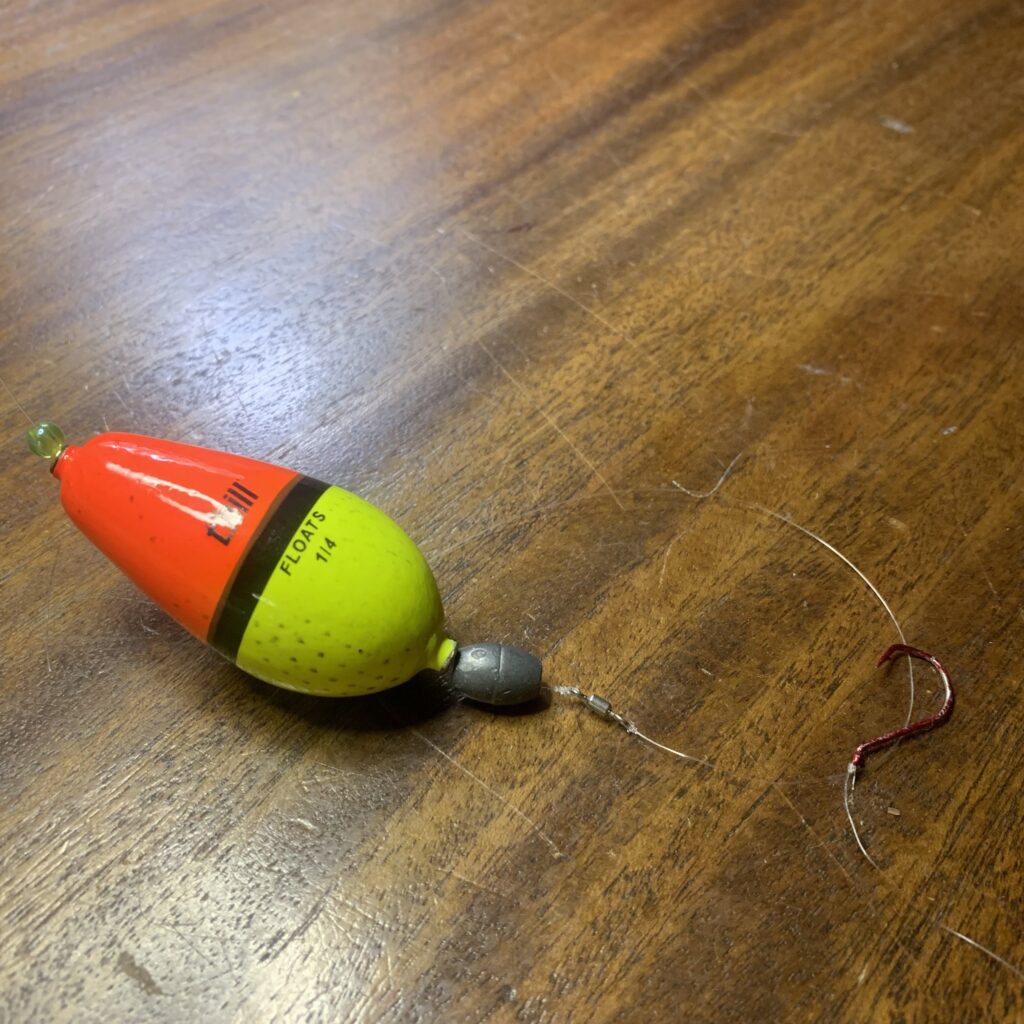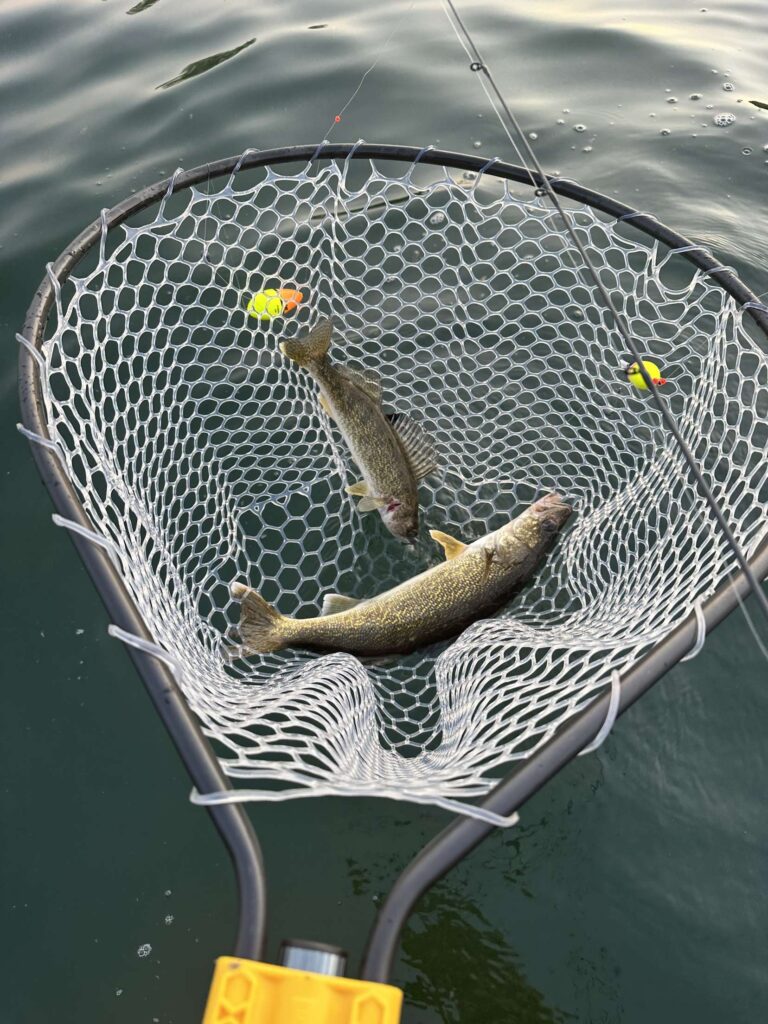Ready to up your walleye fishing game? As an experienced fisherman, I’ve had my fair share of adventures targeting walleye. Walleye are notorious for being picky feeders at times. Having the right rig can make all the difference in whether or not you catch fish. In this article, we’ll explore the top 5 live bait walleye fishing rigs that every angler should try. As always, lets build a fishing community centered around conservation. Let’s dive in!
Article Navigation:
- Walleye Behavior
- The Jig and Minnow Rig
- The Spinner Rig
- The Lindy Rig
- The Slip Bobber Rig
- The Jig and Crawler Rig
- Conservation
Understanding Walleye Behavior and Walleye Rig Selection
Before we jump into walleye fishing rigs, it’s important to understand the behavior and feeding habits of walleye. Walleye prefer low light conditions and gather around structures like weed beds, rock piles, and drop-offs. These areas provide cover and attract baitfish, and the walleye follow closely behind. Walleye location changes throughout the seasons as well depending on a culmination of factors. In general, find the bait and find the fish is the philosophy I’ve used. Choosing the right rig based on these factors will improve your chances of hooking into some walleye on your next trip.

I. The Jig and Minnow Rig
Ah, the old jig and minnow rig! It’s a classic setup that has stood the test of time. The beauty of this rig is its versatility. You can use it in various depths and locations, and it’s effective year-round. Adjust the weight of your jig based on the depth your are fishing. Generally between 1/8 oz and 3/8 oz is a good starting point. When the water is cold, choose the lightest jig you can get away with for the depth. When the water gets warmer in the summer months, choose a heavier jig to create more a reaction strike. Choose the specific type of walleye jig based on the cover and size of minnow that you are fishing.
To set it up, simply attach a jig head to your line, add a lively minnow as bait, and you are good to go. I recommend hooking the minnow through the mouth and out the top of the head. Contrary to popular belief, It doesn’t really matter if the minnow is alive when fishing a jig and minnow rig. Hooking the minnow this way will make them last much longer.
Pro Tip: When fishing with the jig and minnow rig, don’t be afraid to experiment with different colors and sizes of jig heads. Sometimes, walleye can be quite picky, so a little change can make a big difference.
II. The Spinner Rig
If you want to bring some extra flash and vibration to your walleye fishing game, the spinner rig is a great option. The spinner rig is used for trolling, and allows you to cover a lot of water when searching for walleye. This rig combines a spinner blade, beads, and hooks. The spinner blade spins and vibrates through the water at slow trolling speeds. There are a variety of types of blades currently on the market, so experiment with different walleye spinner blades until you find something that works.
I recommend using a spinner rig when the walleye are scattered and you need to cover water to find them. The spinner rig works in all seasons, but it excels when fishing for walleye in the summer. Troll spinner rigs with a bottom bouncer or in-line sinker anywhere from 0.8 mph to 1.5 mph, keeping the rig within a few feet of the bottom. Use your walleye live bait of choice based on the time of year you are fishing and the forage base.
Personal Anecdote: I remember one particularly memorable fishing trip where I decided to give the spinner rig a shot. As soon as that spinner blade started spinning, it was like a dinner bell for the walleye. I ended up landing several nice-sized fish, and the spinner rig has been a go-to in my tackle box ever since.
III. The Lindy Rig
When it comes to presenting live bait in a natural and enticing manner, the Lindy rig has taken the spotlight for many years. This rig consists of a sliding sinker, swivel, a leader line, and a hook. It allows your bait to move freely along the bottom when trolled at very slow speeds. The key to fishing a lindy rig is to give the walleye a few seconds to eat the bait after you feel a bite. The sliding sinker allows walleye the take line without feeling any resistance.
Troll or drift with the lindy rig under 1 mph. This rig is not meant to cover water but instead to catch fish when you have located them. For this reason, I recommend fishing the lindy rig in high percentage walleye locations.
Pro Tip: Experiment with different leader lengths and weights until you find the right combination for the depth and speed you are fishing. Sometimes, a longer leader or a lighter weight can make a big difference in enticing those finicky walleye to strike.
IV. The Slip Bobber Rig

Fishing at precise depths can be a game-changer when targeting walleye. That’s where the slip bobber rig comes into play. This walleye fishing rig allows you to adjust the depth at which your bait is presented, ensuring it stays in the strike zone at all times. With that being said, making sure you have the slip bobber set at the correct depth is critical. Use the length of your rod to gauge how deep your rig is set. Ideally, you want your hook to be within a few feet off of bottom.
The slip bobber is a great rig for fishing around small isolated pieced of cover. Similar to the lindy rig, this rig is stationary and does not cover much water. However, the slip bobber rig is an extremely effective tool once you already have a school of walleye located. Slip bobbers also work great in the weeds since the live bait is suspended from the bobber above.
V. The Jig and Crawler Rig
If you’re looking to catch finicky walleye in the dogs days of summer, give the jig and crawler rig a try. This walleye fishing rig consists of a jig head with a nightcrawler. Similar to the jig and minnow rig, this walleye fishing rig is very versatile. Adjust the weight of your jig based on the depth your are fishing. Generally between 1/8 oz and 3/8 oz is a good starting point.
Nightcrawlers work best when fishing for walleye in the summer. I recommend fishing the jig and crawler around submergent vegetation where you have located a school of fish. Most of your strikes will occur while popping the jig out of the weeds when it gets hung up.
Conservation and Ethical Fishing Practices
As responsible anglers, it’s crucial to prioritize conservation and practice ethical fishing. Adhere to catch-and-release guidelines whenever possible to preserve the walleye population for future generations. Handle fish with care, use barbless hooks to minimize injury, and return them to the water as quickly and gently as possible. Respect fish and wildlife habitats by minimizing your impact and leaving the environment as pristine as you found it.
Congratulations, fellow anglers! You’ve now discovered the top 5 walleye fishing rigs that can take your fishing adventures to the next level. Remember to consider the behavior and feeding habits of walleye when selecting the right rig for each situation. Experiment, try new things, and don’t be afraid to adapt your techniques based on the conditions you encounter.
So, grab your gear, head out to your favorite walleye fishing spot, and give these rigs a whirl. Whether you’re a beginner or an intermediate angler, these rigs will undoubtedly increase your chances of reeling in some walleye success. Tight lines and happy fishing!
